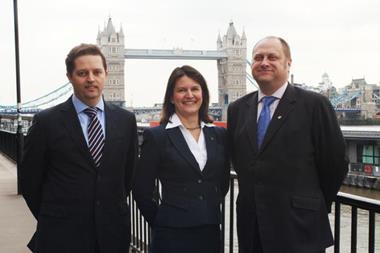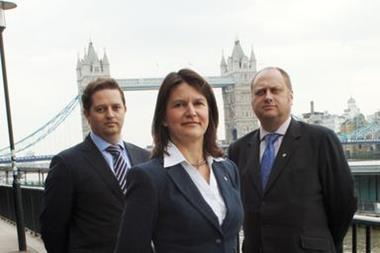Rivals weigh up options as trade credit insurer sees opening for an alternative to the big three
Trade credit insurer Coface is to launch a European-based rating agency as an alternative to the American big three of Moody’s, Fitch and Standard and Poor’s.
Coface UK managing director Xavier Denecker said the company would apply for accreditation this month with the European Commission and the FSA, and aimed to start as soon as possible.
The French-based international insurer would start by rating companies in the UK, Germany and France. Denecker said Coface would rate companies it assesses as part of the trade credit business, which includes large multinationals and small to medium-sized enterprises. Banks and other companies could then purchase the information from Coface at an agreed price.
Denecker said the financial crisis, during which toxic debt was not adequately risk rated, had proved the need for an alternative. “We’ve seen the market is narrow and it is an oligopolistic market dominated by the big three,” said Denecker. “We think that there is an important role to play for newcomers.
“Our target is wider than the big three. The big three are more or less working for the companies that are listed on the stock exchanges over the world. They do not spread to SMEs because they are middle companies and their business model is to be paid money by the companies that are being rated.”
Euler Hermes UK chief executive Fabrice Desnos said his company was “watching with interest” but was well equipped to branch out into a full-blown rating agency.
Meanwhile, Atradius chief risk officer Peter Ingenlath said: “We have information and internal ratings on 52 million companies worldwide, a large part of it in Europe. This puts us in a good starting position should the political environment prepare the ground for a rating service in the style of S&P or Moody’s.”
However, Chartis senior vice-president of trade credit Neil Ross urged a note of a caution. He claimed trade creditors had never had access to real-time information and instead relied on historical records.
“Underwriters need improved collection of non-public risk information for it to be meaningful and useful,” he said. “So a method that offers this would be helpful.”
Hosted by comedian and actor Tom Allen, 34 Gold, 23 Silver and 22 Bronze awards were handed out across an amazing 34 categories recognising brilliance and innovation right across the breadth of UK general insurance.














































No comments yet